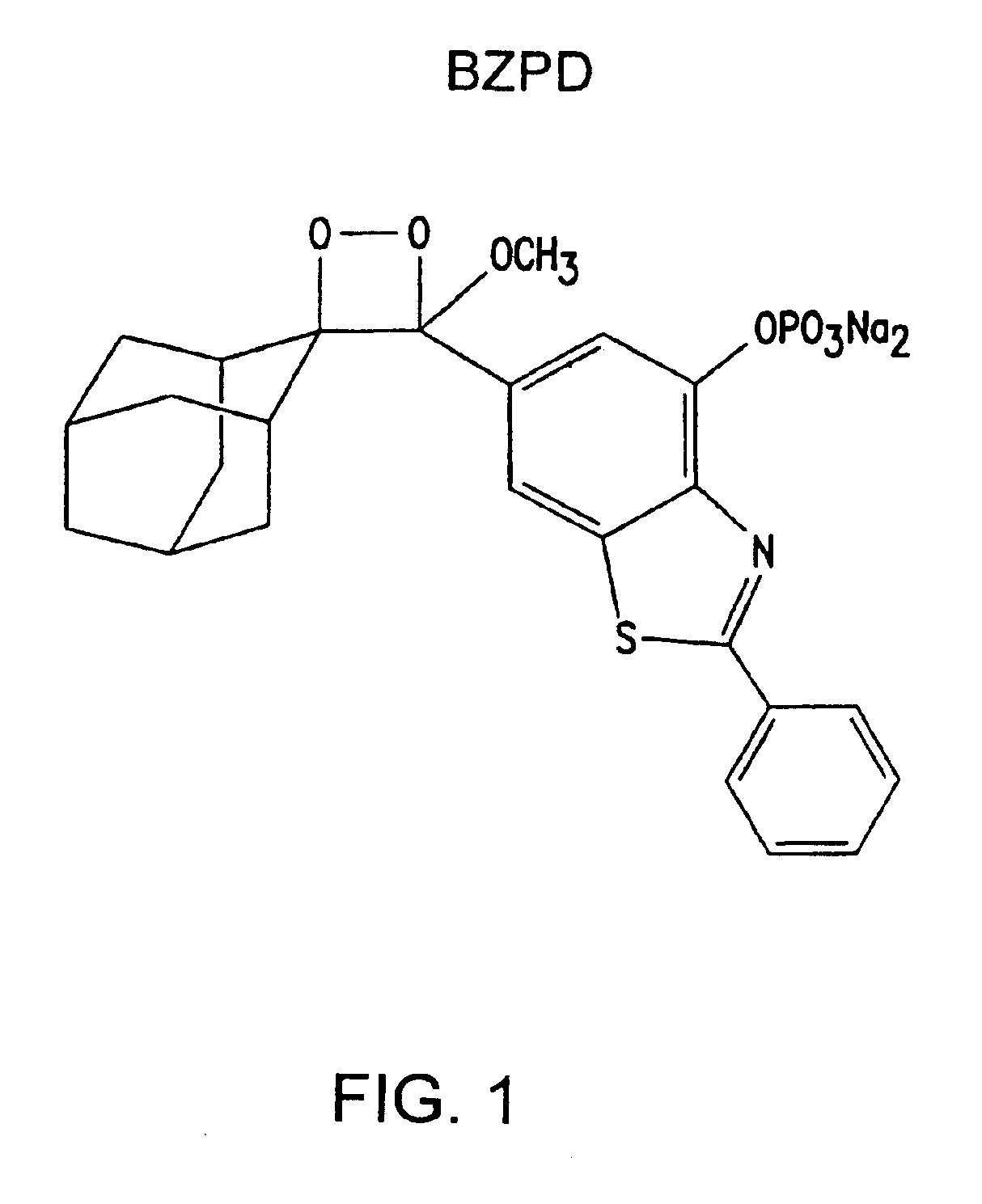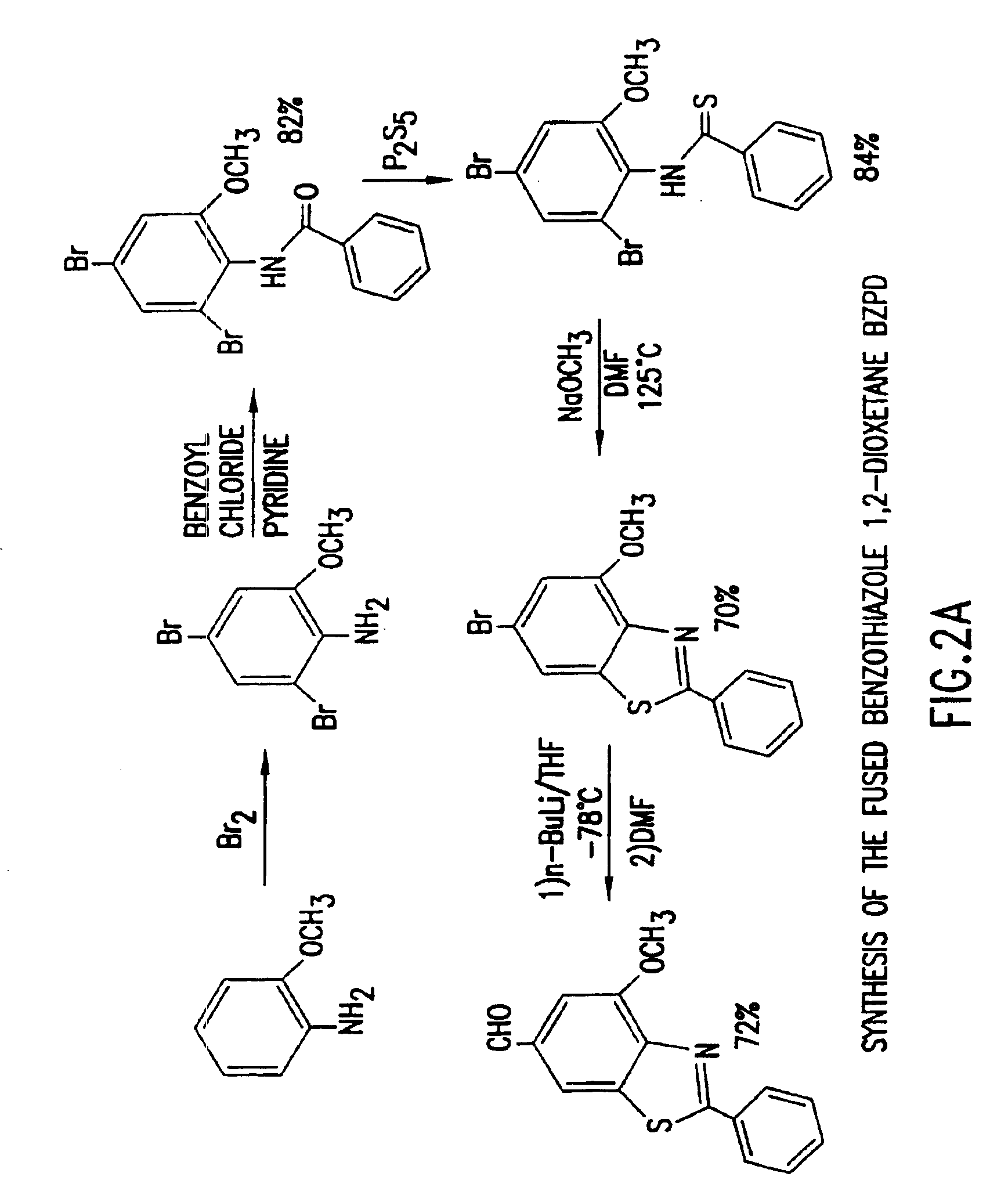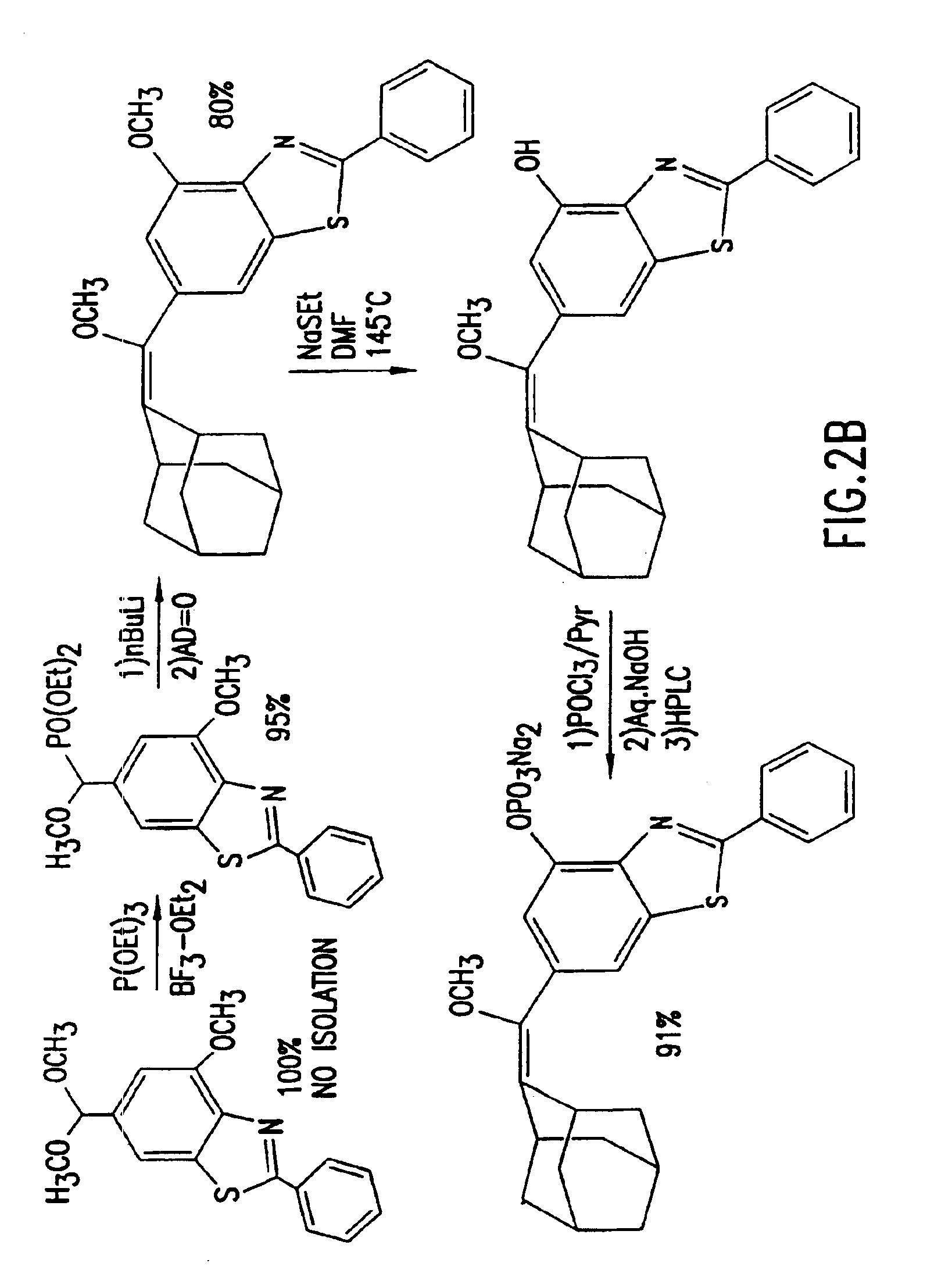Heteroaryl substituted benzothiazole dioxetanes
a technology of benzothiazole and dioxetane, which is applied in the direction of material analysis through optical means, group 5/15 element organic compounds, instruments, etc., can solve the problems of limiting the detection level, preventing the realization of ultimate sensitivity, and unstable and decomposing
- Summary
- Abstract
- Description
- Claims
- Application Information
AI Technical Summary
Benefits of technology
Problems solved by technology
Method used
Image
Examples
example 1
2-Benzamido-3,5-dibromoanisole
[0083]The 4,5-dibromo-o-anisidine (11.3 g; 40.2 mmol), was dissolved in 75 ml dichloromethane and 6.7 ml pyridine. The mixture was stirred at room temperature under argon. Benzoyl chloride (4.8 ml; 1.03 equivalents) was added dropwise by syringe. The mixture was stirred for 8 hours to obtain an orange-brown suspension. The reaction mixture was then concentrated to one-third volume on the rotary evaporator. The thick slurry was filtered on a Buchner funnel, washing the flask and solid with 50:50 dichloromethane / hexanes. The resulting white solid was then washed liberally with water to remove any pyridine hydrochloride. The solid product was then dried in vacuo to obtain 13.56 grams of the above-titled product. The biphasic filtrate was washed with water in a funnel, separating the organic layer, which was then rotary evaporated to yield a purple brown solid. Trituration with 50:50 dichloromethane / hexanes and recrystallization from minimal ethyl acetate g...
example 2
N-(2,4-dibromo-6-methoxy)phenylthiobenzamide
[0084]The product of the preceding example (14.4 g; 37.4 mmol) was dissolved in 35 ml dry pyridine with slight warming. Phosphorous pentasulfide (11 g; 49.5 mmol) was added in portions under argon. A thick, light yellow complex formed exothermically. This mixture was stirred for 2 hours in an oil bath at 90° C. to give a thinner, darker yellow suspension. The mixture was then refluxed for 15 minutes and cooled to room temperature. The mixture was treated with 125 ml ethyl acetate to precipitate a gum. Water, 1 ml, was added with swirling to agglomerate the gum prior to decantation of the supernate. The gum was then triturated with 2×25 ml ethyl acetate. The combined organics were rotary evaporated to yield an orange oil which contained pyridine. A 7% solution of sodium hydroxide in water was added to the oil with vigorous stirring for 20 minutes. The solution was filtered to remove insolubles, rinsing with minimal hydroxide solution. The f...
example 3
2-Phenyl-4-methoxy-6-bromobenzothiazole
[0085]The thioamide from the preceding example (12.6 g; 31.4 mmol) was warmed in 30 ml of methanol. The suspension was swirled during the addition of 7.35 ml of 4.3 M sodium methoxide in methanol (31.6 mmol). During the addition, the solid dissolved and the yellow color faded to light amber. Rotary evaporation of the solvent and pumping in vacuo gave an amber, glassy solid which coated the glass. This thioamide salt was kept under argon during the addition of 20 ml of N-methylpyrrolidone. The flask was capped with a septum and connected to a bubbler as it was placed in an oil bath at 110-120° C. Upon stirring for 30 minutes, a solid developed as the color became green-brown. The flask was then cooled toward room temperature before 100 ml of water was added to produce an off-white solid. The mixture was filtered, and the solid washed liberally with water. After drying in vacuo, the solid was recrystallized from 50:50 ethyl acetate:hexanes to yie...
PUM
| Property | Measurement | Unit |
|---|---|---|
| temperature | aaaaa | aaaaa |
| temperatures | aaaaa | aaaaa |
| temperatures | aaaaa | aaaaa |
Abstract
Description
Claims
Application Information
 Login to View More
Login to View More - R&D
- Intellectual Property
- Life Sciences
- Materials
- Tech Scout
- Unparalleled Data Quality
- Higher Quality Content
- 60% Fewer Hallucinations
Browse by: Latest US Patents, China's latest patents, Technical Efficacy Thesaurus, Application Domain, Technology Topic, Popular Technical Reports.
© 2025 PatSnap. All rights reserved.Legal|Privacy policy|Modern Slavery Act Transparency Statement|Sitemap|About US| Contact US: help@patsnap.com



